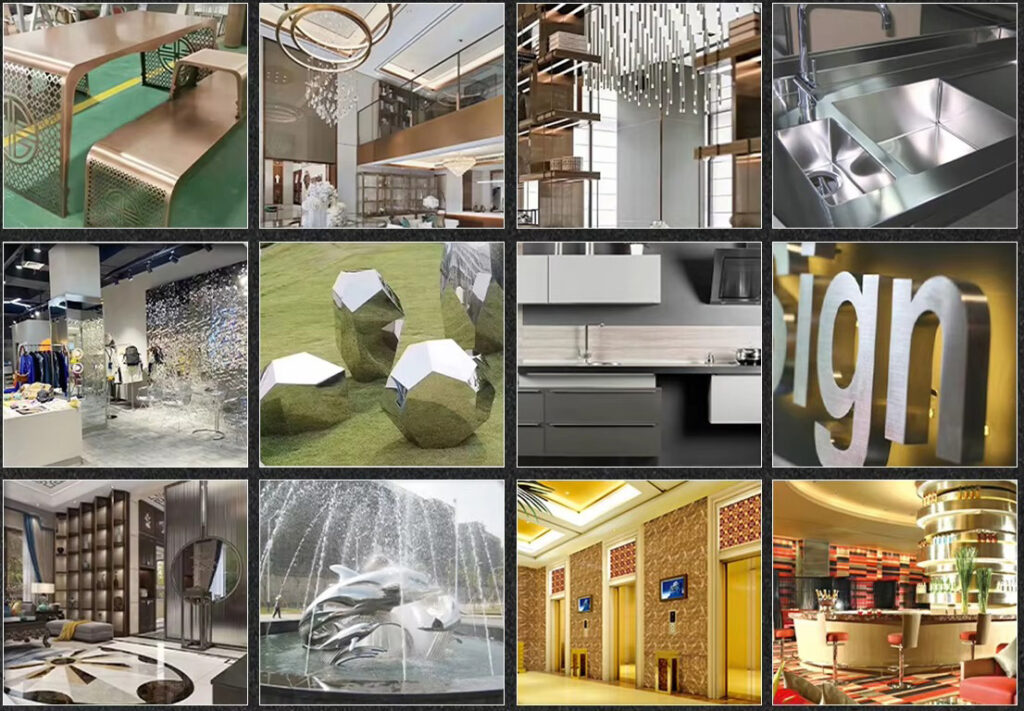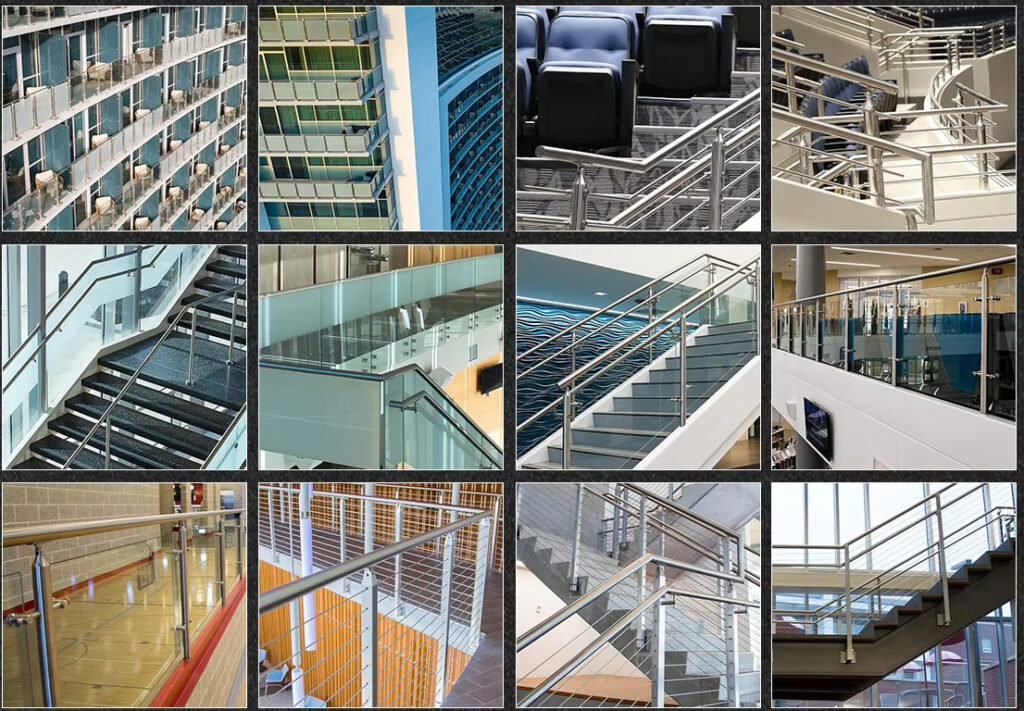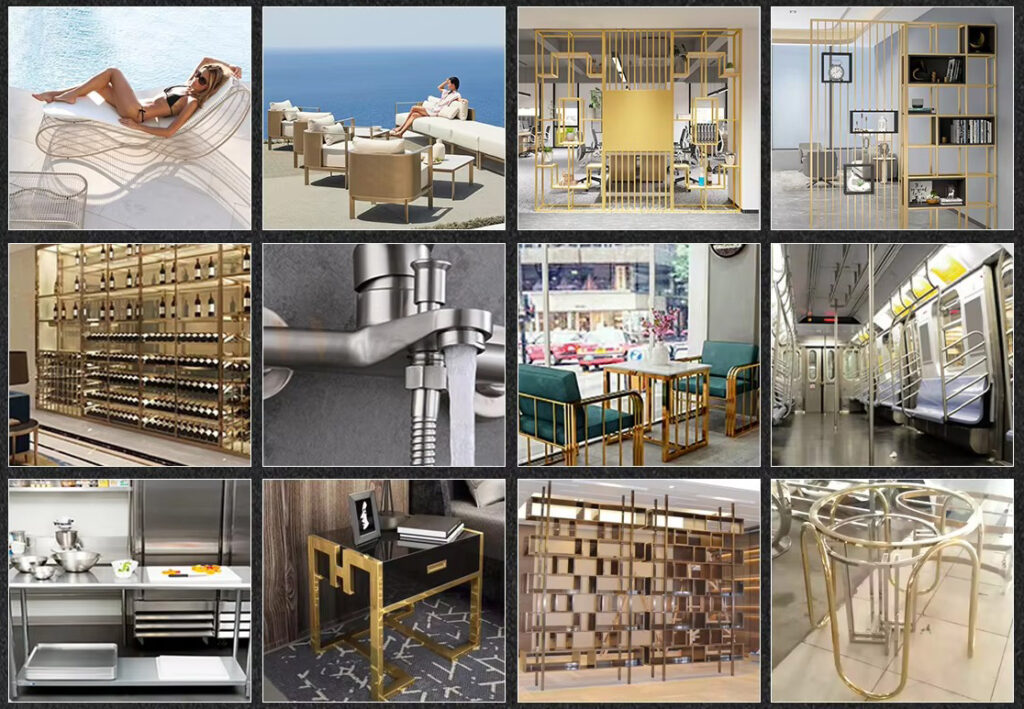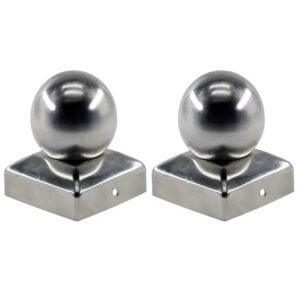
Post caps & end caps (round, square, decorative)
Post caps & end caps in 316L stainless steel. 23 years precision manufacturing for decorative applications worldwide. Request quote today.

Post caps & end caps in 316L stainless steel. 23 years precision manufacturing for decorative applications worldwide. Request quote today.
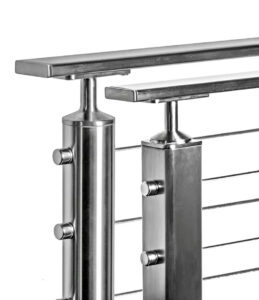
Square stainless steel posts in 304/316L grades. 23 years precision manufacturing for coastal projects worldwide. Request quote today.
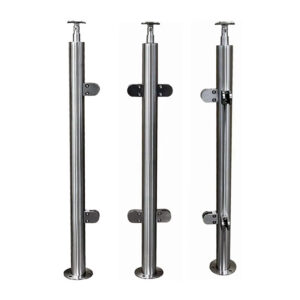
Stainless steel posts in 304/316L grades. 23+ years ODM fabrication for marine & commercial applications. Contact factory today.
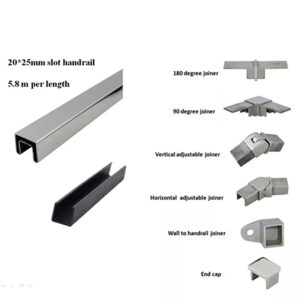
Square top rail components in 316L stainless steel. 23+ years precision manufacturing for global applications. Contact factory today.
Project-specific hardware in 316L stainless steel. 23 years delivering tailored solutions for specialized projects worldwide. Get factory quote today.
Non-standard size components in 316L stainless steel. 23+ years ODM manufacturing for unique sizing requirements globally. Contact us today.
| Specification | Our Premium Cable Systems | Standard Market Systems | Competitive Advantage |
|---|---|---|---|
| Cable Material | 316 Marine-Grade Stainless Steel | 304/201 Mixed Grades | Superior corrosion resistance in all environments |
| Cable Diameter | 1/8″ (3.2mm) precision drawn | 1/8″ (3.2mm) standard | Tighter tolerance ±0.05mm for consistent appearance |
| Breaking Strength | 2,500+ lbs per cable | 1,800-2,200 lbs typical | Enhanced safety margins exceeding code requirements |
| Post Material | 316L Stainless Steel | Aluminum/304 Steel mix | Uniform corrosion resistance throughout system |
| Cable Spacing | 3″ (76mm) on center maximum | 4″ (102mm) standard | Enhanced safety for child protection |
| Tensioning System | Hydraulic-grade adjusters | Standard threaded fittings | Precise 200-2000 lbs tension range |
| Surface Finish | Electropolished Ra ≤ 0.6 microns | Standard mill finish | Superior cleanability and corrosion protection |
| Temperature Range | -40°C to +200°C operational | -20°C to +120°C standard | Extended performance in extreme climates |
| UV Resistance | No degradation after 10,000 hours | Surface degradation after 3,000 hours | Maintains structural integrity and appearance |
Superior Material Performance
Our 316 marine-grade stainless steel cables deliver exceptional tensile strength and corrosion resistance compared to standard 304 grade alternatives used in basic systems. Unlike aluminum post systems that suffer galvanic corrosion when connected to stainless cables, our uniform 316L construction ensures consistent performance throughout the entire system lifespan.
Precision Tensioning Technology
Our hydraulic-grade cable tensioning hardware provides precise adjustment capabilities from 200-2000 lbs tension, significantly outperforming standard threaded fittings that offer limited adjustment range. This precision eliminates the cable sagging issues common with basic systems, maintaining both safety and aesthetic appeal for decades.
Enhanced Safety Design
Cable spacing of 3 inches maximum on center exceeds standard 4-inch spacing requirements, providing superior child protection compared to basic code-minimum systems. Our engineered post-to-cable connection system prevents the cable pullout failures that can occur with inferior hardware under high wind loads or impact forces.
Low-Maintenance Excellence
The electropolished surface finish (Ra ≤ 0.6 microns) on all components creates a smoother protective oxide layer that resists dirt accumulation and simplifies cleaning compared to standard mill-finished cables. This eliminates the frequent re-tensioning and replacement cycles required with lower-grade systems in harsh environments.
Luxury Coastal Residences
High-end oceanfront properties in Malibu and Miami Beach specify our 316 marine-grade cable systems for infinity pool railings and beachfront deck barriers, where salt spray exposure demands materials that maintain structural integrity and visual appeal for 25+ years without cable replacement or post corrosion.
Modern Urban Rooftop Terraces
Metropolitan penthouse developments choose our cable railing systems for rooftop entertainment areas and sky bridges, where unobstructed city views and wind resistance are critical while maintaining the sleek aesthetic that enhances property values in competitive luxury markets.
Contemporary Corporate Headquarters
Fortune 500 companies specify our cable systems for executive office atriums and conference center staircases, where professional appearance combines with the transparency needed to maintain open, collaborative work environments while meeting stringent commercial building safety codes.
High-End Residential Developments
Planned communities and custom home builders utilize our cable railings for multi-level deck systems and grand staircases, where the modern industrial aesthetic appeals to discerning homeowners while the low-maintenance characteristics reduce long-term community association costs.
Boutique Hotel and Resort Projects
Five-star hospitality properties install our cable systems on guest balconies and restaurant terraces, where the unobtrusive design preserves scenic views while withstanding high-traffic usage and eliminating the maintenance disruptions that painted or composite railings would require.
Educational Institution Campus Centers
Universities specify our heavy-duty cable systems for student center atriums and library balconies, where the contemporary design appeals to modern architecture while providing the durability needed to withstand constant student interaction and institutional budget constraints.
Q1: How do stainless steel cable railings compare to glass railings for outdoor applications?
A: Stainless steel cable systems offer superior durability and lower maintenance compared to glass alternatives. While glass provides completely unobstructed views, it requires frequent cleaning and can crack under impact. Cable systems maintain excellent visibility while eliminating the glass replacement risks and cleaning requirements, making them ideal for high-wind coastal areas where glass panels face stress.
Q2: What cable spacing is required to meet building codes and child safety standards?
A: Our systems use 3-inch maximum spacing to exceed code requirements and provide enhanced child protection. Standard building codes require 4-inch maximum spacing, but our tighter spacing prevents small children from getting caught between cables while maintaining the open aesthetic. This conservative approach ensures compliance with both residential and commercial safety standards.
Q3: How often do cable railings require re-tensioning and maintenance?
A: Properly installed systems using our precision tensioning hardware typically require adjustment every 2-3 years compared to annual adjustments needed with standard hardware. Our marine-grade cables and electropolished finish reduce maintenance to periodic cleaning with stainless steel cleaner, unlike wood railings requiring refinishing every 3-5 years or aluminum systems needing re-coating.
Q4: Can cable railing systems be installed on existing deck structures?
A: Yes, our modular mounting systems adapt to most existing structures with proper structural evaluation. However, older wood decks may require reinforcement to handle cable tension loads of 200+ pounds per linear foot. Our engineering support evaluates existing structures and provides reinforcement recommendations to ensure safe installation and long-term performance.
Q5: What’s the difference between 304 and 316 stainless steel for cable applications?
A: 316 grade contains molybdenum for superior corrosion resistance, making it essential for coastal applications and high-pollution urban environments. While 304 grade works for basic indoor applications, 316 grade provides 2-3x longer service life in challenging conditions, justifying the modest cost premium through eliminated replacement expenses.
Q6: How do cable railings perform in high-wind coastal environments?
A: Our 316 marine-grade systems withstand hurricane-force winds better than glass panels that can shatter or aluminum systems that suffer fatigue failure. The flexible cable design absorbs wind loads while maintaining structural integrity, making them ideal for oceanfront properties where rigid railings would experience stress concentrations and potential failure points.
Q7: Are cable railing systems suitable for commercial and public spaces?
A: Yes, our systems meet commercial building codes requiring 200 lb concentrated loads and 50 lb per linear foot distributed loads. Commercial applications benefit from the vandalism resistance and low maintenance characteristics compared to wood or composite alternatives that require frequent replacement in high-traffic public environments.
Q8: What installation tools and expertise are required for cable railing systems?
A: Installation requires standard tools plus specialized cable tensioning equipment and precise drilling for consistent spacing. While simpler than glass installation, proper cable tensioning and post alignment are critical for safety and appearance. Our installation training and technical support ensure professional results and system warranty compliance.
Q9: How do cable railings affect property resale value compared to traditional alternatives?
A: Modern cable railings typically increase property values more than traditional wood or basic aluminum systems, particularly in contemporary home markets where buyers appreciate low-maintenance features and unobstructed views. The premium material investment is often recovered through enhanced marketability and reduced maintenance costs over time.
Q10: Can cable railing systems be customized for unique architectural requirements?
A: Our ODM capabilities support complete customization including custom post designs, specialty mounting solutions, and integration with architectural features like lighting systems. We work with architects and contractors to develop solutions that meet both functional requirements and design specifications for complex contemporary projects.
Industry Standards Compliance
Our cable railing systems conform to ASTM A240 standards for 316 stainless steel composition and ASTM E935 for permanent metal railing performance testing. All systems meet International Building Code (IBC) and International Residential Code (IRC) requirements for guardrail load capacity, including 200 lb concentrated loads and 50 lb per linear foot distributed loads.
Material Certifications
Manufacturing facilities maintain ISO 9001:2015 certification with specialized testing for cable breaking strength exceeding 2,500 lbs per 1/8″ diameter cable. Material certificates document 316 grade composition including molybdenum content essential for marine environment performance, while mechanical testing validates tensile strength and elongation properties.
Cable Performance Standards
Independent testing validates ASTM A313 specifications for stainless steel spring wire used in cable manufacturing, ensuring consistent diameter tolerance and surface finish. Breaking strength testing follows ASTM procedures with documented safety factors, while fatigue testing confirms long-term reliability under cyclic loading conditions typical of wind exposure.
Installation and Safety Standards
Systems meet OSHA safety requirements for fall protection in commercial applications and ADA accessibility standards where applicable. Load testing documentation supports structural engineering calculations, while installation guidelines address proper tensioning procedures critical for both safety and aesthetic performance throughout system lifespan.
International Compliance
Products meet North American, European, and Australian standards including ASTM, EN, and AS/NZS specifications for architectural railing systems. CE marking confirms European safety standards, while additional certifications support global project requirements and facilitate customs clearance for international installations.
Quality Assurance Protocols
Manufacturing quality control includes dimensional inspection of all hardware components and pre-assembly testing of tensioning systems. Statistical process control maintains cable diameter tolerances within ±0.05mm, while surface finish verification ensures consistent electropolished quality critical for corrosion resistance and cleanability in service environments.
